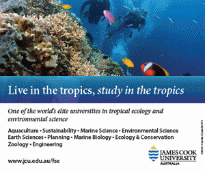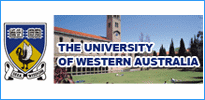slovakia: Slovakia Education Profile 2012
2012/04/04
Slovakia Education Profile 2012
Most schools, especially universities, are owned by the state, though since the 1990s there are also church-owned and private schools (see Statistics section).
Slovakia has 10 years of compulsory education.
Students go to school five days a week, from Monday until Friday. Saturdays as school days were canceled before the 1980s. Summer break is from the 1st of July until the end of August (at universities also in June), a week around Christmas and Easter, and on official holidays.
A school year consists of two semesters. The first one ends at the end of January in all schools, the second one before the beginning of the summer holidays (see above). Primary and secondary school students usually have around 6 classes a day (less at the beginning of the education, more later). Classes last for 45 minutes, and there are breaks between them (several short ones and one longer one – the so-called "big break"). The state financed education and all textbooks and instructional material below the university level are free (returned at the end of the semester) – in most cases at least.
Students at standard schools receive marks in almost all subjects. The marks go from 1 (best) to 5 (worst), and may include unofficial intermediary marks such as 2- (i.e. between 2 and 3, sometimes used to assess a single project, test, etc. but never on student's final reports). Compared to western European countries, there is an intrinsic "tradition" of teachers granting students rather more marks at the "good" end of the scale, i.e. more 1s, 2s and 3s than they would receive in western Europe, for example. Students below the university level receive school reports (lists of final marks) at the end of each semester.
All state-run educational institutions have suffered from a lack of funding since the fall of communism, i.e. from the early 1990s onward. School fees for university-level schools have been prepared for years, but the parliament has been unable to pass legislation requiring them due to strong citizen opposition. Many state-financed schools of higher education finance themselves by means of various semi-legal "extraordinary" and "auxiliary" fees, etc. Corruption is a widespread problem, possibly becoming endemic in academic circles (i.e. paying for term exams, entrance tests, etc.).
Despite the current lack of money, primary and secondary education is at a quite high level compared to many countries of the world. A major deficiency is insufficient promotion of independent thinking and student initiative, a complete absence of creative learning, unreformed and outdated teaching material, methods and syllabi inherited from the former communist educational system, and relatively low remuneration of teachers, leading to a decrease of the number of qualified (and of well qualified) teachers especially below the university level (see the statistics section for some pay figures). University-level schools, unable to provide sufficient pay to get real experts and motivated teachers, are rather mediocre compared to other countries, usually promote pure swotting and use outdated texts and other material. Some reforms of all educational levels, including the introduction of school fees for universities, are said to be in preparation and could be carried out after the next paliamentary elections (to be held 2005). Nonetheless, Slovakia has thus far managed to avoid the excessive brain-drain that has plagued most post-Soviet states.
Primary education
Primary schools are usually preceded by kindergartens where children can spend up to 4 years, which in turn can be preceded by day nurseries.
As a rule, children start the primary school in the year in which they have their 6th birthday. Standard primary schools last 9 years (8 years before approx. the mid-1990s), but since the early 1990s there are also 4-year primary schools, after which students visit so called "8-year gymnasia" (i.e. high school lasting 8 years and "extended" by the last grades of primary schools), which have the advantage of shortening the total studies by 1 year as compared to the combination "standard primary school (9 years) + standard secondary school (4 years)".
The primary education system is formally divided in two "stages". The second stage is characterized by many changes in the subjects treated as compared to the first stage:
- first primary education stage- age 6 to 10, works as platform for next studies
- second primary education stage- age 10 to 15, this "stage" can be spent either in a 9 year primary school or in an 8 year gymnasium
Many primary schools have been closed down since about 2000 due to an unfavourable demographic development.
Subjects at the second primary education stage (many of them are taught even earlier however) include:
- Slovak language and literature (includes Slovak and world literature and Slovak grammar; Slovak is to be replaced with Hungarian or Ukrainian in minority schools; usually everyday one class),
- foreign language(s) (usually two or one, usually English and German; before 1990 Russian was compulsory with 4 classes a week)
- mathematics (incl. geometry almost everyday one class),
- geography (political and physical alike, usually 2 classes a week),
- biology (incl. botany, animal biology, human biology, geology and environmental studies; usually 2 classes a week),
- chemistry (usually 2 classes a week),
- physics (usually 2 classes a week),
- history (usually 2 classes a week),
- religion or ethics (class is subject to a choice, usually 1 class a week),
- PE (usually 2 classes a week),
- music (usually 1 class a week; often skipped altogether due to lack of equipment, funds, teachers),
- drawing (usually 1 class a week, often skipped altogether due to lack of equipment, funds, teachers),
- farming and technical education (usually 1 class a week, often skipped altogether due to lack of equipment, funds, teachers)
- There also many facultative "primary art schools"- afternoon schools for particular music instruments, theatre, painting etc. These have had a long tradition in Slovakia and are attended by a large majority of pupils.
Secondary education
Before entering any school of secondary education (including 8-year gymnasia) for which there are more applicants than places offered, the applicants have to pass entrance examinations.
As a rule, secondary schools last for 4 years (from the age of 16 to the age of 19). A "gymnasium" can also last for 8 years (up to the age of 18) depending on how many years did the student spend in the primary school (see primary education).
There are four types of secondary schools:
- general education (non-vocational):
- gymnázium (i.e. gymnasium, also translated as grammar school or high school) – 4 or 8 years (rarely other lengths), i.e. age 16 to 19 or age 10 to 18; prepares students for higher education; teaches at least 2 foreign languages
- various vocational schools (visited by students interested in arts, crafts or a special company):
- stredná odborná škola(secondary professional school) – usually age 16 to 19; usually also prepares for higher education
- stredné odborné učilište (secondary vocational school) – usually age 16 to 19; training center
- združená stredná škola ('grouped' secondary school) – usually age 16 to 19; rare
The gymnasia (high schools) are usually considered "prestigious" schools, because they explicitly prepare for higher education and because they are often highly selective - only the brightest students from elementary schools advance to them. In fact, most students who attend them later continue their education at a school of higher education in Slovakia or abroad. The high schools that are the most competitive ones are usually located either in Bratislava (Gymnázium Alexandra Markuša Červenej armády (GAMČA), Gymnázium Metodova, Gymnázium Jura Hronca (GJH), etc.), in Košice (Gymnázium Poštová etc.) or in other main cities. These schools annually accept only a very low percentage of applicants. Despite providing general education, many gymnasia have specialized classes . Some of them specialize in languages or are even "bilingual" Slovak-German/English/French etc. (e.g. Gymnázium Metodova, Gymnázium Bilíkova), others are specialized in mathematics or programming, for example Gamča and GJH. Gamča is notable for being founded in 1628.
After finishing secondary school students usually take a school-leaving exam (matura in German, "maturita" in Slovak), which is a basic prerequisite for visiting a school of higher education (college), especially a university. Before 1990 this included obligatory exams in mathematics (written nationwide standardized + oral), Slovak incl. literature (written nationwide standardized + oral) and Russian and in one subject of the students's choice. After 1990, the system was changed, so that every school prepared its own tests and questions – at gymnasia in the subjects: Slovak incl. literature (written and oral), a foreign language (written and oral), two subjects of the student's choice (oral). The obvious problem of this system was low or missing comparability of the results. The maturita system was modified in 2005 again. The new system is supposed to replace the current entrance examinations to schools of higher education (colleges) in the future. The main changes are: one additional exam subject (for gymnasia), nationwide unified written tests for languages and mathematics (other subjects are supposed to follow in the future), a high degree of standardization of other exams, as well as the possibility for the student to choose whether they want to pass an A-level exam (the most complicated one), a B-level exam or a C-level exam (the simplest one, only for languages). At gymnasia, the exam subjects include: Slovak incl. literature (written and oral), a foreign language (written and oral), a natural science subject, and two other subjects of the student's choice
Higher education
The Slovak term "vysoká škola" ("school of higher education", literally "high school", compare the German name Hochschule), which for lack of other expressions is also translated into English as "college", can refer to all schools of higher (i.e tertiary) education, or in a narrower sense only to those schools of higher education that are not universities.
The fist university on the territory of Slovakia was the Universitas Istropolitana (=Academia Istropolitana) founded in 1465. The main and largest current university in Slovakia is the Comenius University. For other current universities and colleges see List of colleges and universities in Slovakia.
The 2002 Act on Schools of Higher Education dinstinguishes public, state, and private schools of higher education (colleges):
- Public schools of higher education are the basic case. They are established by law. The vast majority of schools of higher education is of this type. They are financed by the government and possible business activities.
- State institutions of higher education are all military, police and medical schools. They are established through the corresponding ministries of the government. They are financed by the government and possible business activities.
- Private institutions of higher education are established and financed by non-government institutions, but approved by the Ministry of Education. This type of school is still quite rare.
- Studies at the state and public universities is available free of charge for residents of Slovakia (?)and of the EU. School fees are being planned, however. Other students have to pay from USD 2,500 to USD 6,500 for one academic year.
Before entering any school of higher education for which there are more applicants than places offered, the applicants have to pass entrance examinations. These examinations take very different forms at particular schools. The "maturita" results of the applicant are usually also taken into account when evaluating whether he can become student of the school. Since the number of branches of study and of schools of higher education increased considerably in the course of the late 1990s (although at the cost of quality of the studies), the general percentage of those not being accepted to these schools decreased considerably over the same time period. Also, an increasing number of Slovaks studies abroad, especially in the Czech Republic due to a low language barrier, a slightly better economic situation (and job perspectives) in that country, as well as similarities of the two educational systems. As a result, the percentage of Slovaks with higher education has increased considerably over the last decade.
The studies are organized within the following study programmes and "stages" (also translated as levels). Each school must provide at least Stage 1:
Stage 1: Bachelor study programme; 3-4 years; title: "Bachelor" (bakalár, abbr. "Bc.")
Stage 2, or Stage 1 + Stage 2 (Stage 2 lasts 1-3 years):
- Master's study programme; title: "Master" (magister, abbr. "Mgr.") [in art studies: Master of Arts (magister umenia, abbr. "Mgr. art.")]; additional titles after passing a doctoral viva voce are:
- a) in natural science "Doctor of Natural Sciences" (doktor prírodných vied, abbr. "RNDr."),
- b) in pharmacy "Doctor of Pharmacy" (doktor farmácie, abbr. "PharmDr."),
- c) in social sciences and art sciences "Doctor of Philosophy" (doktor filozofie, abbr. "PhDr."),
- d) in law studies "Doctor of Laws" (doktor práv, abbr. "JUDr."),
- e) in teaching and PE studies "Doctor of Pedagogy" (doktor pedagogiky, abbr. "PaedDr."),
- f) in theology (except for Catholic theology) "Doctor of Theology" (doktor teológie, abbr. "ThDr.").
- Engineer study programme; title: "Engineer" (inžinier, abbr. "Ing.") [in architecture "Engineer of Architecture" (inžinier architekt, abbr. "Ing. arch.")]
- Doctor study programme ; titles:
- a) in human medicine: "Doctor of Medicine" (doktor medicíny, abbr. "MUDr.")
- b) in veterinary medicine: "Doctor of Veterinary Medicine" (doktor veterinárnej medicíny, abbr. "MVDr.")
- c) in dental medicine: "Doctor of Denatal Medicine" (doktor zubného lekárstva, abbr. "MDDr."), studying since 2003
Stage 3:
Doctorand study programme; 3-4 years; titles (placed behind the name):
- a) basic title "Philosophiae Doctor" (doktor, abbr. "PhD.")
- b) in art studies "Doctor Artis" (doktor umenia, abbr. "ArtD.")
- c) in Catholic theology "Licentiate of Theology" (licenciát teológie, abbr."ThLic.") or "Doctor of Theology" (doktor teológie, abbr. "ThDr.")
-
specialisation studies in medicine
The academic year begins on 1st September of the current year and ends on 31st August of the next year (in reality, however it ends in May/June). The studies in one academic year may be divided into two semesters or rarely in three trimesters. The teaching process includes various forms of instruction such as lectures, seminars, exercises, laboratory work, projects, practical training, consultations, etc.. The credit system following the rules of the European Credit Transfer System (ECTS) has been introduced in 1998 for the organisation of all levels and forms of higher education study. The student's standard load is expressed by the number of sixty credits per academic year and thirty credits per semester. The school of higher education determines the total number of credits required for due completion of the study in its respective stagess.
- slovakia News
-
- AFGHANISTAN: UNWTO: International tourism – strongest half-year results since 2010
- ALBANIA: US LNG exports make European market more competitive
- AFGHANISTAN: Higher earning Why a university degree is worth more in some countries than others
- SLOVAKIA: Slovakia opens Holocaust museum in former Nazi camp
- ALBANIA: Europe in 2016: Terror fears, migration, politics. But economy may turn a corner
- AFGHANISTAN: Global growth will be disappointing in 2016: IMF's Lagarde
- Trending Articles
-
- SIERRA LEONE: Where’s best to invest in Sierra Leone?
- EGYPT: Dollar exchange rate maintains stability at Egypt's banks
- NIGERIA: Africa's Richest Man Sets Sights on Launching Nigeria University
- INDIA: Uztrade JSC creates Trading House in Delhi
- BOTSWANA: Africa: U.S. State Department To Get Experienced Diplomat in Key Africa Post
- RUSSIA: Russia, Turkey negotiate deals worth $820 million











